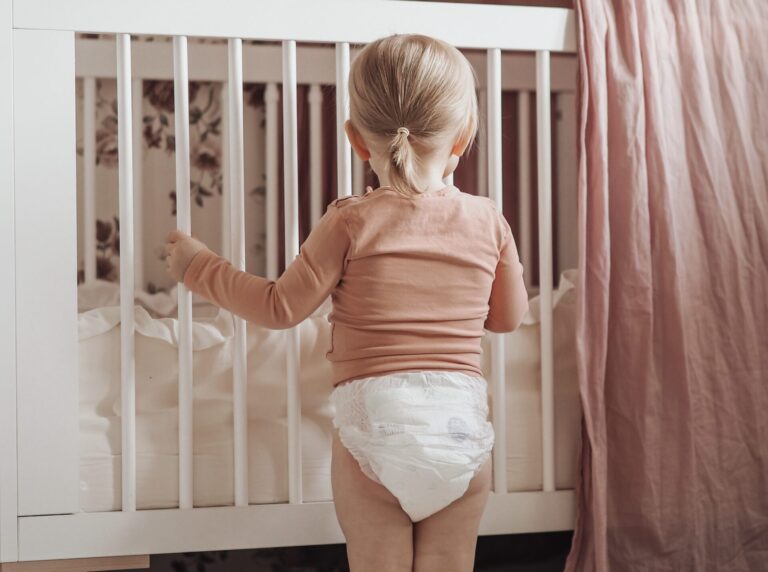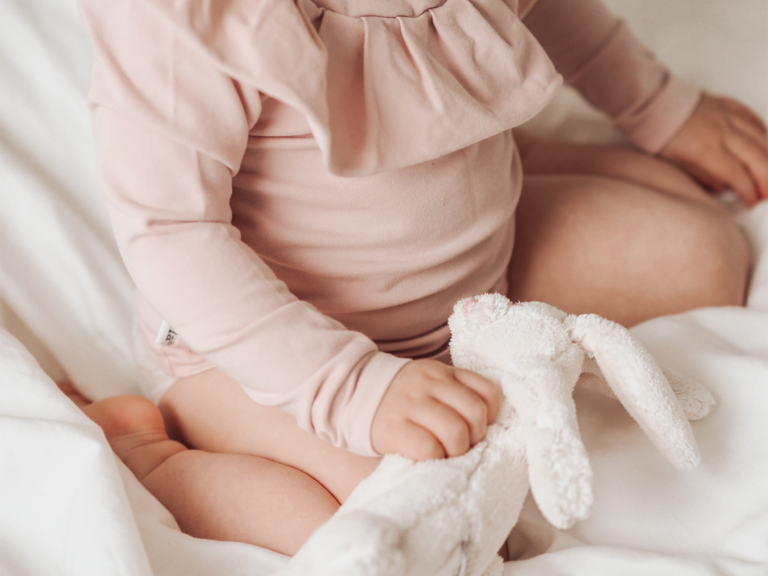When your child turns two, their sleep patterns can become challenging. This can cause sleepless nights for both the child and the parents. In this blog post, we offer the best advice on how to effectively identify and manage sleep deprivation in a 2-year-old. With these tips, you can help your child get the healthy and restful sleep that is essential for their physical and mental development.
What might sleep deprivation look like in a 2-year-old?
Sleep deprivation in a two-year-old can be a confusing and stressful time for parents, when a child’s previously predictable sleep routine suddenly changes. Toddlers who have previously slept through the night may begin to wake up repeatedly or resist going to bed. The symptoms of sleep deprivation can manifest themselves in a variety of ways: a child may resist bedtime routines, delay bedtime, wake up in the middle of sleep or be more restless when going to bed. Night wakings may be prolonged and the child may feel inconsolable or irritable at these moments. These sleep changes can be caused by many factors, such as the child’s developmental stages, changes in daily rhythms, hyperactivity before bedtime or other stressful life changes. It is important to understand that this is a normal developmental stage and to patiently help your child to readjust to a more settled sleep pattern.
The most common causes of sleep deprivation in a 2-year-old: What every parent should know
By the age of two, many children experience sleep deprivation, which can be caused by a variety of factors. Firstly, at this age children are developing rapidly, both physically and cognitively, which can affect their sleep needs and their ability to fall asleep or stay asleep. Also, new social and emotional skills can bring additional sleep challenges as the toddler begins to understand more about the world around them, which can cause worry and anxiety at night. In addition, this age phase involves testing boundaries and trying out one’s own will, which can manifest as resistance to routines such as bedtime. It is important for parents to recognise and seek to understand these factors in order to apply a patient and consistent approach to support the child through sleep deprivation and promote a return to healthy sleep routines. Consistency and maintaining soothing sleep routines are key during this challenging developmental period.
Come find out here how you should react to your one-year-old’s sleep deprivation!
Perseverance and calmness are key.
Night wakings and their management: practical tips for parents
By the age of two, night wakings are common and can affect the sleep quality of the whole family. Parents should take a calm and consistent approach to night wakings. The key is to establish a calming bedtime routine that helps your child recognise that it is time to settle down and get ready for bed. If your child wakes up in the night, it is a good idea to remain calm and avoid over-stimulating your child by turning on lights or having a lively conversation. Instead, calm stroking or quiet singing can help your child to calm down and go back to sleep. Some parents also use the “quiet return” technique, where the child is returned to bed without much attention despite their protests. It is important to remember that every child is an individual, and what works for one may not work for another. However, persistence and calmness are key and together these will help both children and parents to overcome sleep deprivation and find their way back to a consistent and peaceful night’s sleep.
Here you can read more about what sleep deprivation is about for your baby or toddler!
The importance of daytime naps and their impact on sleep
Daytime naps play a key role in a toddler’s overall sleep pattern and can have a big impact on the quality and duration of sleep. By the age of two, many children’s naps begin to shorten or are timed earlier in the day. This change can help to ensure that the child is sufficiently tired by the evening, contributing to a smoother sleep pattern and reducing night wakings. It is important to find a balance so that daytime naps are not too long or end too late in the afternoon, which can make it difficult to fall asleep in the evening. Parents are advised to monitor their child for signs of tiredness and to stick to a consistent nap routine. The nap should be long enough to restore the child’s energy, but not too close to dusk, so as not to undermine the effectiveness of the evening routine. By balancing naps correctly, parents can make a significant contribution to improving their child’s sleep patterns and thus ensure that a healthy sleep rhythm is maintained.

Sleep school and other methods to improve sleep: What is the best solution?
Sleep school is a popular and often debated method to teach children good sleep habits and improve their ability to fall asleep and stay asleep. The idea of sleep school is based on a consistent routine and, where appropriate, various self-soothing strategies. One such strategy might be for parents to leave the child in bed to cry for a certain period of time without immediate comforting. This can help the child learn how to fall asleep independently. However, it is important to note that there is no one size fits all approach to sleep school. Each child’s needs are individual and there is no generalised method. Other ways to improve sleep may include creating calming bedtime routines and optimising the sleep environment. Other families may benefit from approaches that focus on calming and comforting, such as having a parent present in the child’s room at bedtime or playing soft music. The key is to assess the suitability of different methods for your family and find a sustainable and compassionate way to support your child towards better sleep.
Find out more about sleep school and related tips here!
Soothing bedtime routines: The key to better sleep
The importance of calming bedtime routines cannot be overstated when aiming for a better night’s sleep for a two-year-old. Regular and predictable activities before bedtime help both body and mind prepare for a night’s rest. A warm bath, for example, can start the bedtime routine, which is both relaxing and a signal that it is time to wind down. This can be followed by getting into nightclothes and reading a relaxing bedtime story in a quiet environment. It is also important to limit active play and screen time well before bedtime so that the child’s brain is not too attuned to sleep. For some children, soothing music or dimming the lights before bedtime may help. Consistency is key to maintaining a routine; the child will form a strong link between the actions of the routine and falling asleep. When the bedtime routine follows a familiar pattern, the child learns to look forward to sleep as a natural next step, which improves ease of falling asleep and overall sleep quality.
More tips for better sleep for your child can be found here!
Your child’s sleep and your well-being: How to take care of your own well-being too?
When talking about sleep deprivation in a 2-year-old child, it is important to remember that parents’ ability to cope is an essential part of the child’s well-being. Night wakings and bedtime problems can be exhausting, and parental fatigue can affect the mood of the whole family. That’s why parents should pay attention to their own rest and recovery. One effective way is to share the burden of parenting with a partner or other members of the support network, for example by taking turns in taking responsibility for night-time wake-up calls. Small breaks and alone time can be refreshing when parenting feels challenging. It is also important to go to bed early, especially if you are expecting a restless night. Even short daily rest periods, such as mindful breathing or naps at the same time as your child, can help you recover. Parents should not hesitate to ask for help or support from friends, family or professionals if exhaustion seems excessive. By remembering to look after their own wellbeing, parents can better support their child through sleep loss and maintain overall family happiness and functioning.
Anticipation is key to managing and mitigating the effects of infant sleep deprivation.
Anticipating and managing problems: What to do when sleep deprivation strikes?
When sleep deprivation strikes a two-year-old, parents may feel unprepared to deal with unexpected situations that require a quick solution. Anticipation is therefore key to managing and mitigating the effects of sleep deprivation in a toddler. It is useful for parents to learn to recognise signs that signal a possible sleep disorder, such as abnormal tiredness during the day, mood changes, or resistance to going to bed. When a problem occurs, persistence and consistency are important. Do not give in to your child’s reluctance, but remain calm and firm in your policies. Identify the conditions that are most conducive to your toddler’s sleep – for example, a dark and cool room, a familiar soundscape, and possibly a comforting object such as a soft toy or nightlight can help your child feel more secure and ready for sleep.
Another important proactive measure is to ensure that parents take care of their own well-being and coping. During sleep deprivation, parents’ night-time sleep may be intermittent, so taking a nap or alternating with a partner for night-time wakings may be necessary. If problems persist and sleep deprivation becomes a longer-term challenge, it may be helpful to talk to a child sleep specialist or health professional. Their advice can help find solutions and interventions that best suit the family’s situation.
How do Moomin Baby diapers help your toddler sleep?
When talking about sleep deprivation in 2-year-olds, it may come as a surprise that even the choice of diaper can have an impact on a child’s sleep. Moomin Baby diapers are designed to support a good night’s sleep, as they are breathable, skin-friendly and made to be absorbent to keep moisture away from the skin throughout the night. Plus, the eco-friendliness of Moomin Baby diapers brings peace of mind to conscious parents, which can reduce stress and promote a better night’s rest for the whole family.
Sensitive toddlers will particularly benefit from Moomin Baby diapers, which feature soft, high-quality materials and a good fit. These features help prevent diaper rash and other skin irritations. The diaper does not cause discomfort, which can mean fewer night wakings for your baby. By choosing Moomin Baby diapers, parents can be confident that they are providing their child with the opportunity to enjoy uninterrupted, quality sleep.
We welcome you to try Moomin Baby diapers by ordering your free Diaper Hero sample here!










